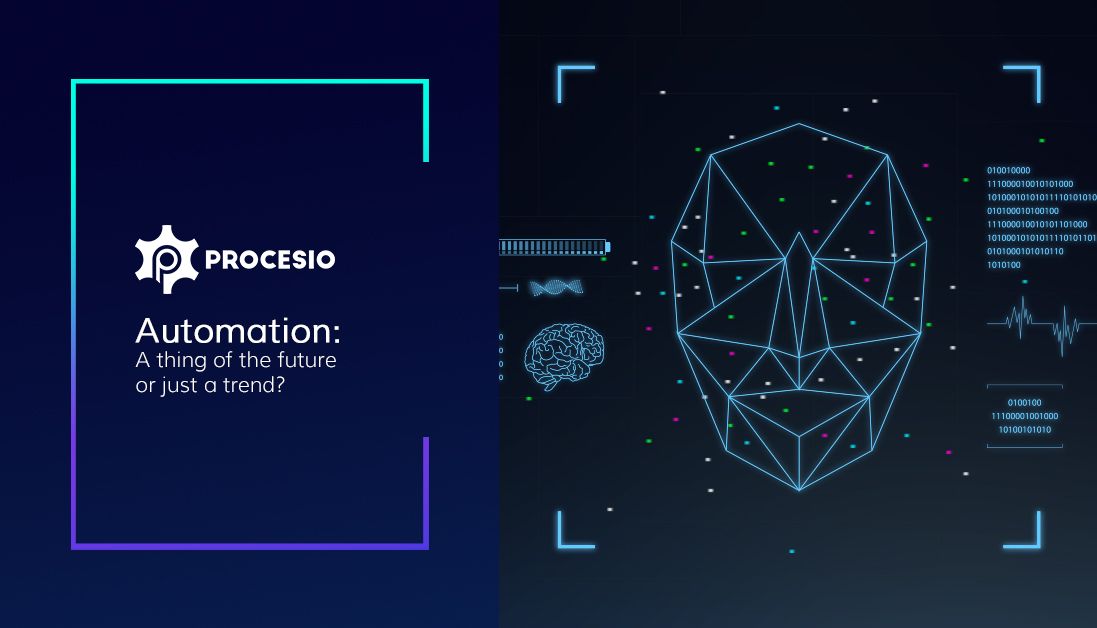When we think about the rapid evolution of technology, inevitably, we also think about automation. From manufacturing cars to workflow automation, the world has seen a significant increase in automation productivity.
Terms such as business agility, digital transformation, and the digital-first approach are no longer representing the ideal but necessary. Additionally, the rapid development of automated tools to complement humans has greatly benefited the world economy by increasing the overall demands for products and services.
A recent report by Gartner shows the following predictions for 2021:
- By 2025, 50% of enterprises will devise artificial intelligence orchestration platforms to operationalize AI, up from fewer than 10% in 2020.
- By 2023, 40% of product and platform teams will use AIOps for automated change risk analysis in DevOps pipelines, reducing unplanned downtime by 20%.
- By 2024, organizations will lower operational costs by 30% by combining hyper-automation technologies with redesigned operational processes.
These statistics show that IT automation is just beginning to show its benefits, and companies are still a long way from automating their processes. Let's dive deeper into this subject and determine whether IT automation is genuinely something to be aware of or just a trend.
AI and Automation
AI is already transforming businesses and will continue to contribute to economic growth through its additions to productivity. Additionally, this technology will transform the nature of work and the workplace by carrying out more tasks than humans. However, AI can never replace humans, but instead, it will change the jobs that people do.
McKinsey's report shows that 15% of the global workforce could be displaced by AI automation by 2030. Stil, there are some influencing factors. The first one is the technical feasibility of automation. Other factors that influence AI technologies' adoption include the cost of deployment, labor-market dynamics, and social acceptance.
Such a result would mean that organizations can reduce human error by accepting AI and automation and making processes more efficient by removing human interventions and delays. With the faster adoption of automation, IT teams and businesses can achieve much more without requiring more resources. The difference is that between 2020 and 2021, automation is accelerating at a faster rate than ever before.
Additionally, by 2025, more than 20% of all products will not be touched by anyone else except the end customer. The fully automated value chain is a result of hyper-automation. As organizations automate more and more tasks, they are organized into end-to-end processes that are more efficient, reliable, scalable, and easier to adapt.
Workflow Automation
In the past, automation used to mean robotics, algorithms, and, more recently, artificial intelligence. But what exactly is a workflow exactly?
A modern "workflow" is a process of repeatable steps laid out by a graphical(no-code technology) or code-based interface allowing for a simple connection of parts of a sequence to produce an intended result. The workflow's job is to quickly layout the steps you need to do to complete a process. Additionally, workflow automation simplifies the path that documents and certain services take, creating opportunities for companies to focus on what's essential for them. Another added benefit of this technology is that it eliminates bottlenecks, fosters collaboration, encourages accountability, and improves processes by creating efficiency and accuracy where there was once chaos. Automated, complete documentation means happier employees, customers, and auditors/outside collaborators.
Furthermore, workflows will save you countless hours of manual processing time and lower your overall costs. This prioritization method is taking off as the increasing customer demands have forced both companies and employees to automate their duties, collaborate, and add transparency to their everyday tasks.
DevOps and Automation
In addition to helping both employees and companies streamline their processes and increase efficiency, automation is here to support developers.
A report from 2019, sponsored by Google and many other companies, clearly shows that the software industry values speed and automation. Without automation, $300billion is lost annually due to decreased developer productivity, which presents enormous automation opportunities. In addition to keeping developers focused on what they need to do, automation saves businesses precious time.
Furthermore, automation is the mother of scalability. Teams of DevOps that manage multiple applications and deploy to multiple cloud environments can benefit from automation and scale projects up, depending on the needs.
Conclusion
Robots will never replace humans; automation will only change the jobs people do. People need to take the time to understand automation and how it can be applied to our daily lives. Automation creates opportunities just as much as it may replace a job role. As many businesses have already experienced, it's not just a trend but also a necessity in today's fast-paced world. In the future, we will see greater integration between robots and humans. They will work seamlessly together to achieve more effective and efficient results. Improved safety measures will mean people and machines will benefit from the best that each has to offer.

